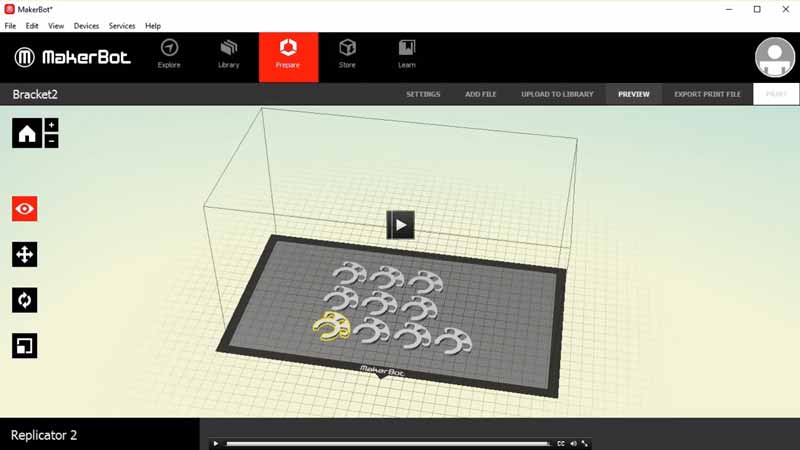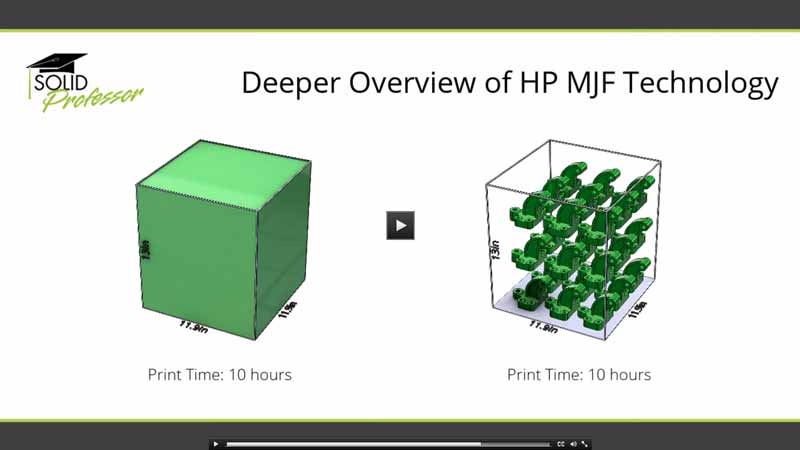Design for Manufacturing (DFM) has been a crucial topic for engineers and designers to know about for decades because it helps optimize and streamline manufacturing processes. Designers have also had to understand the rules and best practices associated with specific manufacturing processes such as injection molding and CNC machining in order to design their parts to be produced successfully and cost-effectively.
The rise of DFAM
In the past, Additive Manufacturing wasn’t much of a consideration in the DFM landscape since it was primarily looked at as a way to create prototypes or very low volume designs. With the rapid evolution of additive manufacturing and new technologies and modalities becoming available, such as HP’s Multi Jet Fusion (MJF) printing, that has definitely changed over the past few years.
With additive manufacturing truly being a viable “manufacturing” method, it’s more important than ever for designers and engineers to know the rules and best practices, just as they would for injection molding and CNC. Over the past few months, we’ve worked closely with our partner Forecast 3D, who has one of the largest installations of HP MJF 3D Printers in the world in their Carlsbad, California facility. It’s been fascinating to get some of their insights into the knowledge gaps surrounding designing for additive manufacturing. There were three key takeaways from my interactions with Forecast 3D as we worked together on developing a Design for Additive Manufacturing course.
- Understand the technology you’re using
- Design for the build not just the part
- Let go of constraints from other manufacturing processes
Understand the technology you’re using
One of the things that makes designing for additive manufacturing a bit more complex than traditional manufacturing methods is that there are so many different additive manufacturing methods and modalities. With injection molding, there were considerations such as draft angles and wall thickness that allow a part to successfully be molded and ejected from a mold without warping; and those constraints would vary slightly depending on materials. When it comes to additive manufacturing, depending on which technology you’re using, the constraints and considerations can be completely different from modality to modality. So, instead of learning one set of rules for injection molding, you may need to know several sets of rules and material considerations if you’re using more than one additive manufacturing method.
Design for the build not just the part
Whether you’re using an FDM printer with a build platform, or a powder bed fusion technology like SLS or MJF, which have about a cubic foot of build volume, if you are intending to produce relatively high volume of your products then you’ll want to make the most of each print cycle.
In the case of FDM, you’ll want to fit as many parts in the X and Y directions of the build platform, and from there you’re only constrained by the part height in the Z direction. Although the print cycle won’t take as long if you don’t use the entire build platform, it will require you or the printer operator to standby and start a new print cycle as each one finishes.

In the case of powder bed fusion, such as HP’s MJF printers, you’ll want to fit as many parts as possible within the 3D bed of powder. With this technology, since the powder is self-supporting, it’s possible to stack parts in three directions even if they’re not touching. Additionally, because of how this technology works, the time that it takes to complete each job isn’t affected by how full each build is; therefore it’s smart to fit as many parts as possible.

Let go of constraints from other manufacturing processes
After decades of designing parts for traditional manufacturing methods, old habits can be hard to break. Apparently, it’s fairly common at print bureaus to receive parts that were originally designed for injection molding. While it’s typically no problem to print those parts, unfortunately, those designers are leaving a lot of opportunity on the table for innovation, as well as potential cost savings in cases where assemblies could have been printed as a single component, saving both assembly time and inventory costs.
As far as design considerations go, one would never think of sending a part originally designed for CNC to be injection molded without considering draft angles, and wall thicknesses, etc. One should not consider sending a part originally designed for injection molding to be 3d printed without considering the manufacturing process, which might have an effect on surface finish of certain faces, dimensional accuracy of particular features, and material strength in X and Y, versus Z directions.
If you are designing a new product from scratch, it’s worth considering at the early stages of the design whether additive manufacturing is a viable pathway for your production needs. If so, take advantage of the opportunity to let go of constraints of the past and really think outside the box from anything you might have designed before.
























